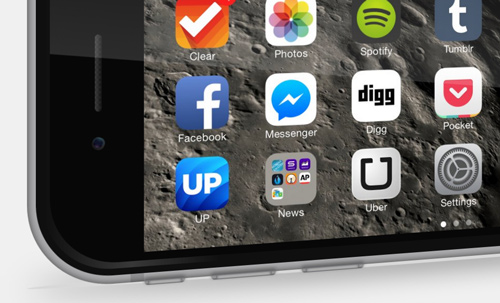Photorealistic Pure CSS iPhone
I made an iPhone. Here’s how:
Structure
The structure is heaps simpler than it looks. It’s built with a series of nested divs, each with a large border-radius and a bit of padding. On the face of the device we have three inline-block elements, comprising the camera, the screen, and the home button.
<div class="wrap">
<div class="metal-casing">
<div class="bezel">
<div class="front">
<div class="cam-speaker-wrap">
</div>
<div class="screen">
</div>
<div class="button-wrap">
</div>
</div>
</div>
</div>
</div>
Highlights
Pseudo-elements are your friend. They’re such a powerful tool for adding graphic details while keeping your HTML clean and semantic. Highlights for side buttons and camera lens:
See the Pen aOQyPL by Sam R (@samratcliffe) on CodePen.

Animation
A bit of CSS animation can bring the phone to life. The wrapper div is given a very simple rotate3d() transform around the y axis.
@keyframes swing {
0% {
transform: rotate3d(0, 1, 0, -10deg);
}
50% {
transform: rotate3d(0, 1, 0, 20deg);
}
100% {
transform: rotate3d(0, 1, 0, -10deg);
}
}
.wrap {
animation-name: swing;
animation-duration: 4s;
animation-iteration-count: infinite;
}
The reflection is given another rotation in the opposite direction to make the lighting look more striking:
@keyframes reflectShift {
0% {
transform: rotate3d(0, 0, 1, -3deg);
}
50% {
transform: rotate3d(0, 0, 1, 6deg);
}
100% {
transform: rotate3d(0, 0, 1, -3deg);
}
}
.front::after {
animation-name: reflectShift;
animation-duration: 4s;
animation-iteration-count: infinite;
}
And that’s basically it. Take a look at the codepen for more info.